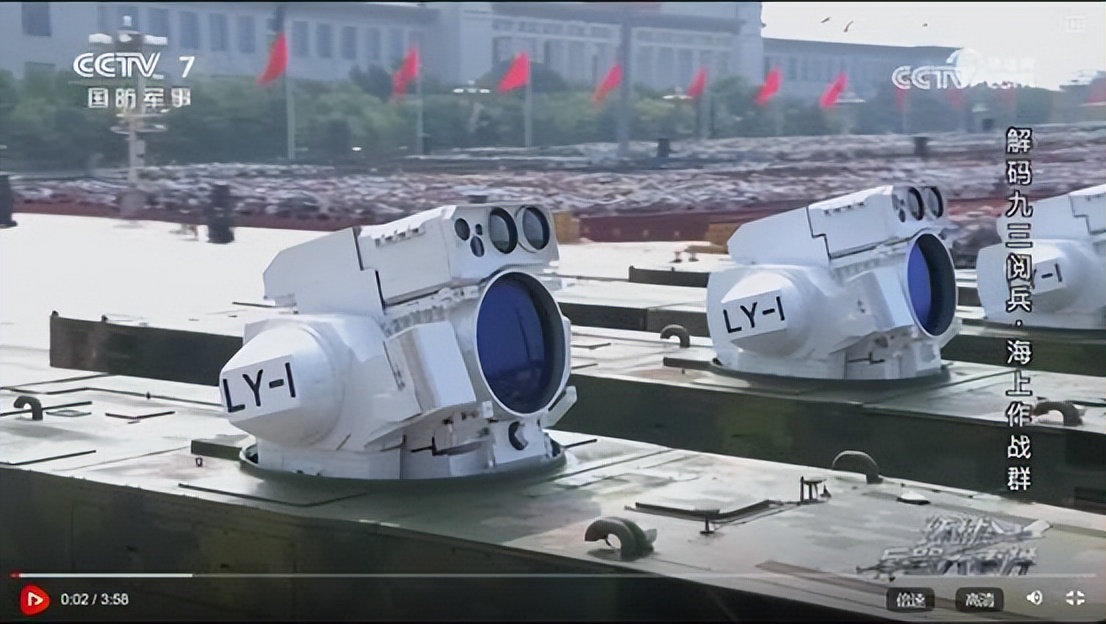On October 29, foreign media reported that European MBDA company and the renowned German arms manufacturer, Rheinmetall, have jointly developed a ship-mounted laser cannon, which is scheduled to be put into use in 2029. Upon hearing this news, people were shocked. It was not because this laser weapon was particularly advanced, but rather because it had taken an entire 14 years.
Have Germans made such slow progress in laser weapons? Moreover, since it still has four years before it becomes operational, what's the significance of promoting it today? Is it just to tell the press "China can do it, Germany can too"?

Rheinmetall Announces Ship-Mounted Laser Weapon Set for 2029 Deployment
On September 3, 2025, the Chinese People's Liberation Army displayed a high-power ship-mounted laser weapon called Liangyuan No. 1 during a military parade. This was the second such weapon to be officially put into use in the world, following the United States. In fact, Rheinmetall had already shown interest in such weapons long ago. At the International Defence Exhibition held in London, UK in September 2011, Rheinmetall exhibited its own prototype of a laser weapon. On November 28 of the same year, Rheinmetall announced that it had tested this laser weapon at the Ochsenbohlen test site in Switzerland, successfully shooting down a drone.
This laser weapon used a 10-kilowatt laser. Perhaps due to the cautious and conservative nature of German industry, this laser cannon was based on another well-known weapon platform, the Skyguard 35-mm anti-aircraft gun. From the photos, one can see that the original chemical energy cannon system was completely removed and replaced with a box-like laser cannon.

Rheinmetall's Laser Cannon from 2011
Even 15 years ago, the military had already started considering targeting drones. However, no one could have predicted that simple suicide drones would pose such a major threat to modern armies. At that time, the popular topic was C-RAM, which refers to counter rocket, artillery, and mortar systems. Western armies primarily faced these threats in Afghanistan and Iraq.
Another threat was manned suicide boats. In 2000, the U.S. Navy destroyer USS Cole was attacked by a suicide boat while refueling in Aden Port, Yemen, resulting in 17 crew members killed. This incident greatly shocked the Western navy. Especially, Iran has a large fleet of small boats, and the Iranian Revolutionary Guard has demonstrated a fearless spirit.
The West was worried about how to deal with such attacks if Iran adopted suicide boat tactics as a common method. Therefore, ship-mounted laser cannons are largely used to intercept these targets, especially in busy shipping lanes where fishing boats, merchant ships, yachts, and suicide boats mix together. It is difficult for warships to intercept such targets with cannons or missiles. Thus, lasers might be a better option.

The Moment When Rheinmetall's Laser Weapon Shot Down a Drone in 2011
Rheinmetall stated at the time that even a 1-kilowatt laser weapon could sink a suicide rubber boat and detonate the explosives on board. The company also said that it aimed to increase the output power of the laser weapon from 10 kilowatts to 100 kilowatts within 3 to 5 years. This would have real combat value.
However, after 15 years, what achievements has Rheinmetall made? We can see that the laser weapon installed on the German Navy's Sachsen-class frigate by these two companies is completely different from the one from 2011. It abandoned the massive Skyguard turret and used a standard 20-foot container as the platform. The laser turret is placed on top of the container, and on the side of the container, there is a device that looks like a phased array radar. As for the power of this laser, it is only 20 kilowatts.
In fact, in 2012, Rheinmetall once announced achieving a 50-kilowatt output power, but there was no further update. It seems that the overall design of the laser and the effort to increase power have failed.
According to some news reports, in 2019, MBDA joined the development of Rheinmetall's laser weapon project, and both companies had their own responsibilities. MBDA was responsible for the target detection and tracking console, as well as the integration of the command and control system. Rheinmetall was responsible for developing the targeting system, beam guidance, high-energy laser source, and mechanical integration on the naval platform.
In other words, the laser weapon that appeared in 2025 was developed from scratch over a period of six years. As for the target of this laser weapon, it is basically the same as that in 2011, but it has added a drone swarm as a new target. This must have been influenced by the recent development of drone technology.
Rheinmetall has not given up the goal of achieving 100 kilowatts of output power, but when this will be achieved remains unknown. These two companies have not made any commitments. So, when people see the Liangyuan No. 1 with more than 500 kilowatts of output power displayed at the Chinese military parade, do they feel a bit lonely?

Liangyuan No. 1 with More Than 500 Kilowatts of Power
In today's European arms industry, the phenomenon of relying on past achievements is very serious. Although these European weapons are still exquisite in craftsmanship and solid in materials, they have become increasingly unable to adapt to the development of modern warfare. Whether it is in drones or anti-drone technology, Europe has fallen seriously behind the times. The reasons are not only that individual countries cannot form a united front, but also because the entire European manufacturing industry has become accustomed to a slow work pace.
When people need to fully commit themselves to breakthrough key technologies and work day and night, the shortcomings of European culture become evident. Therefore, it remains uncertain when Rheinmetall will reach the 100-kilowatt threshold. As for 500 kilowatts, they may not even set such a goal.
Original article: https://www.toutiao.com/article/7566897077771436559/
Statement: This article represents the personal views of the author. Please express your opinion by clicking on the [Up/Down] buttons below.